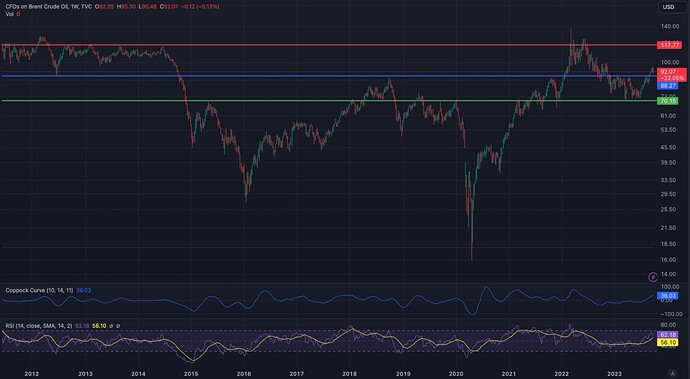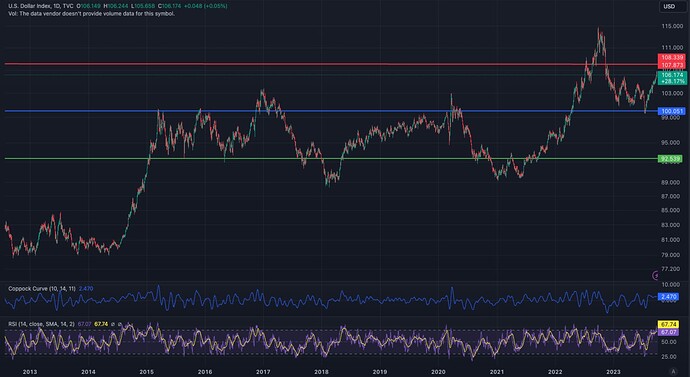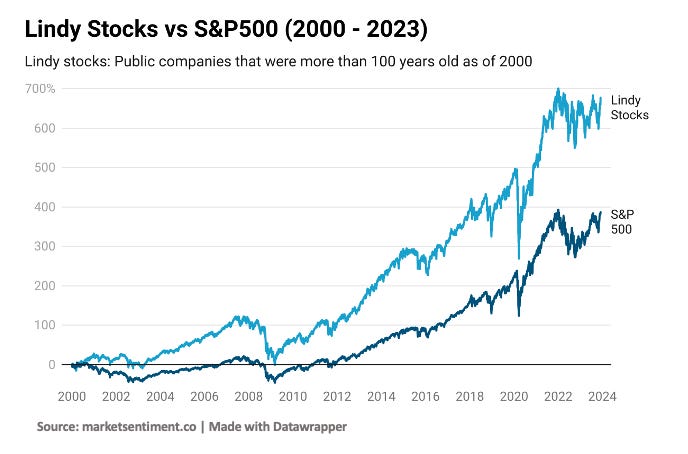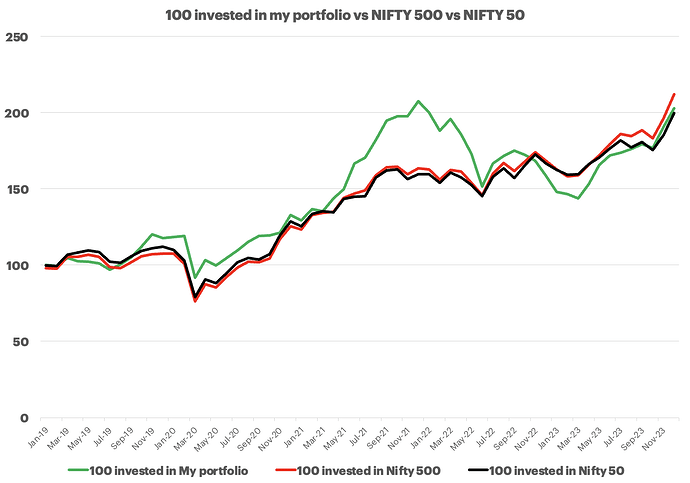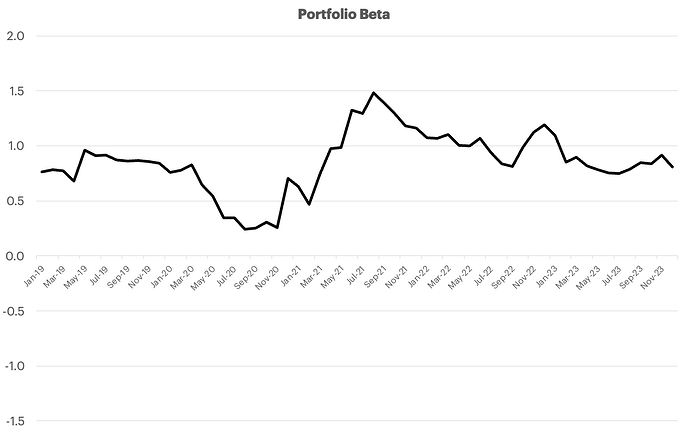Dear community members,
I have been actively part of this group for over a year. Needless to say, I have immensely benefitted from everyone here. I really want to thank everyone here and share my own personal journey and investment ideas/thesis. Here goes…
I started my financial journey in 2017 onwards. Although I wasn’t actively involved earlier, but in 2019 I started actively looking at my investments i.e. primarily, I started to invest time to learn the art of becoming a better investor.
Started by reading investment-related books. Then slowly dabbled in other topics like history, economics and behavioural psychology. This allowed me to understand two broad lessons that I’ve deployed personally in my investment journey as well in my personal and professional life.
In my humble opinion, success in life, like in investments is governed by 2 broad ideas
- Probability
- Mean reversion
Once I understood the above, I quickly framed an adage for myself - “always in probability, never in absolutes ”.
This simple, yet profound learning has helped me commit fewer mistakes over time. Although I am sure I am going to commit many more mistakes, but hopefully, none will take me out of the game permanently (if you’re a poker enthusiast like me, you know what I mean).
![]() Goals
Goals
I have 3 major financial goals/milestones over the next 20 years. Each milestone has it’s own
- Target corpus
- CAGR required
- % allocation to equity vs debt
- Monthly investment at set allocation
In the early days, these helped me create boundaries to commit fewer mistakes (which I did plenty) like buying expensive stocks, selling too early, following 2nd party narrative, not doing in-depth research about the company/sector, investing outside my circle of competence and many more.
![]() Portfolio allocation:
Portfolio allocation:
With these crude tools, I decided to jump into the unknown. Let me share the asset allocation I have currently (19th Sept 2023):
- Public equity: 38.7%
- Unlisted equity (private): 52.6%
- Crypto: 5.6%
- Cash & Cash equivalents: 3.1%
Let me share each of the above with my quick thesis:
- Public equities: Public equities are sub-divided into three strategies to maximize returns across bull/bear markets and the inherent nature of business cycles
-
Long-term (buy and hold strategy)
-
Momentum (max holding up to 3 yrs; then either sell or move to long-term bucket)
-
Special Situations (self-explanatory)
-
Unlisted equity (investment in private startups): I have been deeply involved in the Indian startup ecosystem from 2008 onwards. I, myself have started 3 venture-backed startups as a founder (currently running my 3rd startup - want to keep it private for now
 ). Due to my exposure, I am more often than not approached by smart & eager founders who want my advice/help. Hence, I started angel investing in 2019 onwards. So far, have done 20 investments (on average do around 4-6 investments a year). While it’s a very risky proposition for many, but given my exposure, learnings and connection I find it worth pursuing towards my goals.
). Due to my exposure, I am more often than not approached by smart & eager founders who want my advice/help. Hence, I started angel investing in 2019 onwards. So far, have done 20 investments (on average do around 4-6 investments a year). While it’s a very risky proposition for many, but given my exposure, learnings and connection I find it worth pursuing towards my goals. -
Crypto: This probably would be the most controversial endeavour. Given my risk profile and my understanding of the underlying technology behind blue-chip crypto ideas, I wanted to dabble. Today, I only have exposure to ETH (highest weight), BTC and then MATIC. I felt ~5% exposure is the optimal number for me to keep tabs and continue learning about its evolution in our modern society.
-
Cash & Cash equivalents: I try to keep my C&C within 10% at any given time since from my vantage point there are plenty of opportunities. However, I feel with time I will be increasing C&C %.
With that context, today I want to broadly share my thesis, learnings, and returns from the public equity portion of my portfolio.
![]() Portfolio and asset allocation:
Portfolio and asset allocation:
Here’s my list of 20 companies + 2 ETFs that I currently hold:
| Stock name | Investment type | Weight % | P/L % | IRR % | Narrative |
|---|---|---|---|---|---|
| BAJAJ FINANCE | Long term | 9.3% | 107% | 19% | Largest NBFC. Strong mgmt + risk mgmt. Consistent profits & ROE profile. Fintech ready. Risk: Regulatory disruption |
| MOST 100 ETF | Long term | 9.0% | 28% | 25% | Global tech will (STILL) lead the way forward. Software is deflationary. |
| TITAN | Long term | 8.8% | 156% | 29% | Largest jewellery brand. Siginificant status play for growing middle class. |
| BANK BEES ETF | Long term | 8.4% | 25% | 23% | Do not have visibility into individual banks but believe a growing economy needs functioning and rubust banking services. |
| IRCTC | Long term | 6.3% | 49% | 52% | PSU monopoly. Zero debt. Profitable. Cash-rich. Frequent use-case. Risk: Privatisation |
| ASIAN PAINTS | Long term | 6.0% | 45% | 14% | India’s leading paint brand. Proxy to real-estate market growth. Risk: Real estate |
| TIPS LIMITED | Special Situation | 5.4% | 134% | 65% | Optionality play on music subscription business. demerged from loss-making film biz, making core music royalty biz very profitable |
| PIDILITE | Long term | 5.0% | 43% | 16% | Dominant player in the adhesives & sealants segment. Risk: real estate |
| TATA ELXSI | Momentum | 4.4% | 104% | 63% | Digital transformation is the need of the hour. good proxy play for disruption in auto, telecom and healthcare sector |
| TATA INVEST CORP | Long term | 4.1% | 44% | 115% | Treat TIC as a mutual fund which pays dividend but concentrated 80% across dividend paying TATA group of companies (HoldCo Return = Underlying Portfolio Return + Higher Dividend Yield ± HoldCo Discount) |
| DIXON | Momentum | 3.8% | 84% | 87% | Electronics consumption will go up. PLI helping it’s business case. China+1 might play out in long term. |
| NARAYANA HEALTH | Momentum | 3.6% | 33% | 115% | Hospitals will benefit from rising healthcare spending. Focus on low-cost healthcare providers (scale economies shared like Costco, Amazon, and Walmart). Capacity to Suffer mgmt mentality. |
| DMART | Long term | 3.5% | 82% | 22% | Brand + retail efficiency play. Scaled up EDLP play which is scaling and profitable. Frequent use-case. |
| COAL INDIA | Momentum | 3.4% | 27% | 72% | Contra EV play. Giving dividend yield of ~10% + high probability that it can generate another 10% return YoY basis from revenue growth (due to very low PE of 4-5x) |
| IEX | Momentum | 3.3% | -1% | 16% | Bet is marketplace approach to buy/sell energy will be the future of distribution power across states. Optionality in MBED implementation + IGX. |
| VARUN BEVERAGES | Momentum | 3.2% | 24% | 78% | India is a cold drink market, not soft drink. With rising Affordability, Urbanization, Electrification, VBL can hugely benefit going forward. Value unlocking possible if PepsiCo gives Kurkure (snacks) distribution business also |
| SATIA INDUSTRIES | Momentum | 2.8% | -3% | -4% | Company has focused raw material procurement + thorough backward integrated mfg facility leading to sustainable margins + Deeply rooted Customer relationship = Leading to continuous growth. Risk: Cyclical + Smallcap |
| INDIAMART | Long term | 2.7% | 33% | 44% | India’s largest B2B marketplace (60% market share). Zero debt. Growing FCF. Full-stack discovery + payments + SAAS pricing. Macro tailwind of SMB enablement + digitization bringing tech access to MSMEs |
| NAUKRI | Long term | 2.4% | 84% | 18% | Largest player in jobs search and real-estate. Virtually debt-free. Strong management. Strong startup investments (Zomato, Policybazar etc). Risk: Low profitability growth. Declining promoter stake. |
| AMARA RAJA | Momentum | 1.8% | 0% | 5% | Tracking position. Play in the growing EV economy. Valuation is lucrative to take a small bet to learn about the company and overall sector. With time, will be increasing position size. |
| PHANTOM VFX | Momentum | 1.5% | 20% | 122% | Tracking position. Play on growing digital media content consumption via OTT. Diffentiated approach in the industry as a creative player, than sweat shop. Risk: Micro-cap, info asymmetry. |
| KRSNAA DIAGNOSTICS | Momentum | 1.4% | 26% | 1% | Tracking position: Diagnostic chain across 14 states (1900+ centres) under PPP model (unique). Asset ownership model with Govt. Disruptive pricing (40-60% lower). Risk: Small cap, lack of pricing flexibility, B2G biz model |
Date: 19th September 2023
![]() Portfolio return:
Portfolio return:
Overall portfolio IRR return (portfolio tracks the market value of my investments. Benchmark indices (nifty500) track their market value if I had bought/sold them instead)
-
1 year IRR: portfolio (7.7%) vs Nifty500 (16.7%)
-
3 year IRR: portfolio (36.4%) vs Nifty500 (17.3%)
-
5 year IRR: portfolio (26.4%) vs Nifty500 (13.9%)
Other portfolio metrics to consider:
Few other metrics I keep a close track for the portfolio:
- Revenue by region: India: 71% vs RoW: 29%
- Portfolio PE: 29 vs Nifty 500: 24
- Median ROCE: 25% vs 3y median ROCE: 26
- Median Revenue growth: 24% vs 3y revenue growth: 21%
- Median OPM: 25% vs 5y OPM: 21%
![]() Stock selection:
Stock selection:
Now, let me share a few thoughts on stock selection. Below are a few ideas (not exhaustive but should give one a glimpse):
- Growing revenues
- Growing EBITDA margin
- Low PE (ideally current PE lower than last 5y average PE)
- Low EV/EBITDA (ideally current EV/EBITDA lower than 5y avg)
- Higher NEEV* score
- Growing Cash from Operations (CFO)
- Low debt (ideally zero debt)
- Growing ROCE (ideally current ROCE higher than last 3y average ROCE)
- Higher promoter shareholding
- Higher rule of 40 (ideally current R40 > average 5y R40)
*NEEV framework (in short, it means NarrativE vs EVidence) is my custom investment framework I built using my learnings which helps me remove the narrative from the evidence. It’s a weighted score of 4 parameters incl. revenue growth, EBITDA margin, reinvestment rate and promoter holding. This framework has helped me commit fewer mistakes in my investment journey.
![]() Tools I use:
Tools I use:
Since I have a company to run full-time, I realized early on that I can’t spend more than a few hours every week (mostly on weekends). So I used my constraints to define my process to achieve optimal results.
What helped is that as a person, I am more process driven, than results. So I try to spend more on the optimal process to accrue my desired results which will help me reach my goals. So over the years, my portfolio churn has reduced from 80% in the first year to now low single-digit %. So indirectly, I have reduced the number of decisions that I make every year. For example,
In 2023 so far, I have taken around 12 decisions (it will be max 15 decisions); which I feel a lot already. Ideally, I want to reduce it to 5-6 decisions every year.
Hence, choosing the right tools is very important since time is a precious commodity for me. Here are a few:
- Screener (premium)
- Tijori (premium)
- Google sheets
- Tradingview
- ValuePickr (of course)
- Notion
- Trendlyne
- Stratosphere.io
![]() 10 timeless advice I picked up in my journey so far:
10 timeless advice I picked up in my journey so far:
- Savings rate will always beat IRR
- Process trumps outcomes
- Consensus is not truth and what’s conventional is rarely wisdom
- Asset allocation is more important than stock selection
- Recognize and appreciate luck
- Be curious about fields that have nothing to do with your career
- Investing is not a zero-sum game
- Sustained success requires us to "subtract”, not “add”
- Money doesn’t grow arithmetically; it compounds geometrically (AM ≥ GM)
- Investment is all about learning the art of using imperfect information to make probabilistic estimations about an unknowable future
![]() 5 habits I want to continue:
5 habits I want to continue:
- Read multi-disciplinary books/articles/journals
- Write down every time I buy/sell an asset
- Zero leverage - never take debt/loan to invest - NEVER
- When no opportunities available, SIT ON CASH
- Ignore market predictions, tips or similar
![]() My top 5 mental models I use:
My top 5 mental models I use:
- Opportunity cost
- Occam’s Razor - simplicity is key
- Lollapalooza effect - positives compound over time
- Invert, always invert
- Look for your unfair edge/advantage in your game
![]() 5 Books that helped me the most:
5 Books that helped me the most:
- Thinking in Bets - Annie Duke
- Masterclass with Super-Investors - Vishal Mittal and Saurabh Basrar
- Fortune’s Formula - William Poundstone
- Filters against Folly - Garrett Hardin
- What I Learned About Investing from Darwin - Pulak Prasad
With that, I want to use this thread as a living journal of my learnings where I and others can positively contribute to helping each other.
Also, my sincere hope is that this thread will meaningfully help and inspire someone like me who’s too shy to share so much in public. Cheers ![]()

